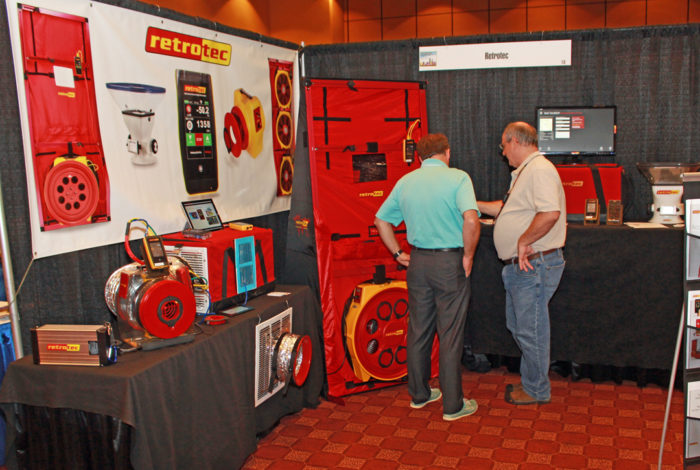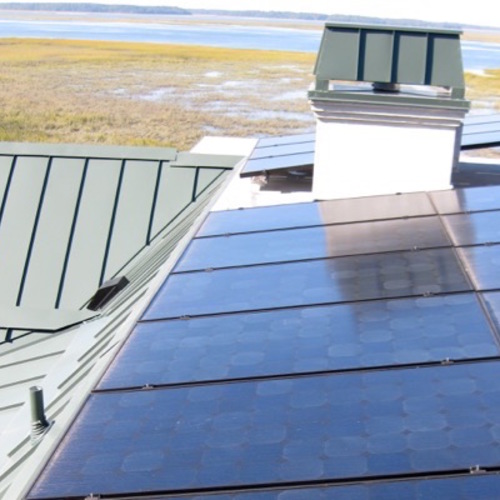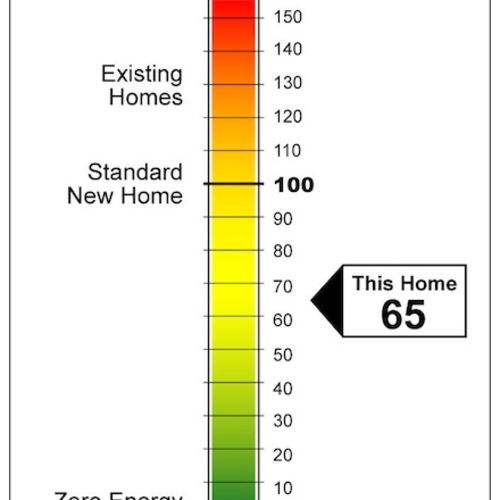
Image Credit: Randy Martin
In the U.S., the system for writing, adopting, and enforcing building codes is peculiar. Lots of people are confused about building codes.
Anyone interested in understanding building codes in the U.S. needs to start by learning a few basic facts:
- The U.S. doesn’t have a national building code. Building codes vary from state to state, and in some cases from city to city.
- In some areas of the U.S., municipal officials tell builders that there are no building codes whatsoever for builders of single-family homes. Be careful, though: in many cases, codes apply — they simply aren’t enforced.
- The best-known code-writing organization in the U.S. is the International Code Council (ICC) of Falls Church, Virginia. The ICC is a non-profit organization; the group is not an arm of any government. The ICC writes “model codes” that have no force of law — unless, that is, a state, county, or municipality decides to adopt one of the model codes.
- When a state or other jurisdiction adopts a model code, it rarely adopts the code as written. Instead, it usually adopts an “amended” (altered or edited) version of a model code.
- Because of the facts listed above, builders who work in more than one jurisdiction must learn how to work under different versions of the building code.
- Even when a code is adopted by a state or municipality, code provisions often remain unenforced.
The ICC codes that are most relevant to residential builders are the International Residential Code (IRC) and the International Energy Conservation Code (IECC). These codes are written in three-year cycles, which means that every three years, a new version of the code is published. That’s why builders and code officials refer to the 2009 IRC, the 2012 IRC, or the 2015 IRC.
When states adopt a…
Weekly Newsletter
Get building science and energy efficiency advice, plus special offers, in your inbox.

This article is only available to GBA Prime Members
Sign up for a free trial and get instant access to this article as well as GBA’s complete library of premium articles and construction details.
Start Free TrialAlready a member? Log in















16 Comments
From the middle of the mess.
I comment mostly out of frustration. Having been doing testing and performance improvements in existing homes for a few years now, this past year has thrust me into codes and new homes like never before, largely because of the new code (Michigan). I'm not the only blower door in the area but it feels like it.
The first problem is that everyone got the air tightness memo but not the the ventilation memo, this includes many inspectors. Since I see this as two sides of the same coin it has put me in a difficult position. Even though the code requires ventilation it doesn't specifically require it to be tested (I know I'm the only one around here doing that), it seems both building and mechanical inspectors are having difficulty understanding what continuous mechanical ventilation is. In example, I just tested a house at 1.8 ACH50 and it had a 4" flex from outside to the return air duct flowing under 10 CFM and besides that the homeowner was planning to heat the place with his pellet burner so the furnace wouldn't even be running anyway. In a case like this I just make sure to inform the builder/homeowner about the need for ventilation in tight houses.
Second is the strange grey area created by this testing. Although we testers are contracted by the builder it's clear the builder and inspectors often see us as some kind of pseudo inspector. The inspectors are happy for you to take on some of their responsibility and the builders want you to advocate for them. Another Rater just told me that the local code authority said he was on the books as a "special inspector" and was obligated to tell them about any other code violations he saw, which is definitely not a good policy. The other extension of this grey area is that we are largely being called in at the end of a project to test for a condition that can no longer be easily fixed, when it fails the blower door test everyone involved just looks at me, and of course they should have been looking at me a couple months ago, but construction schedules seem very difficult to change. Thank goodness hitting 4 ACH50 isn't actually the problem it's more about measuring how tight the house is and ensuring an appropriate ventilation system is in place, which leads us back to my first issue.
I'm not sure this code is really improving homes in my area yet but it has started an important conversation that will continue. I see my failings right now as a lack of out reach to inspectors and builders to address these things up front. A problem I hope to address soon. Despite the issues I am happy to be doing this, I guess I'm just wondering how others are dealing with the code required blower doors.
In Canada
There is a common misapprehension that because some rural or remote areas don't require building permits or provide inspections, that the codes don't apply. Codes here are enacted for the entire provinces and it is the responsibility of the owner doing or contracting the work to make sure they meet the codes.
Five paths to compliance?
In addition to the three you've listed, one might say are two other listed means of compliance in the model code.
The first is the "Total UA Alternative" (R402.1.5), where one can trade off a better-than-code area of the building shell for an area that doesn't meet the prescriptive code minimum. ResCheck software is almost always used for this method. I see a number of renovation projects where shallow roof assemblies that can't hit the R-49 requirement are traded off with better windows.
The second is a "low energy building" with a peak design rate of energy usage less than 3.4 Btu/h * ft^2, section R402.1.
The second doesn't seem to play much of a role in real code use, but the first is used all the time. It's just a variation on the prescriptive requirements but we often find people who don't realize that a small area that can't quite hit the prescriptive requirement can be managed with a calculation rather than with closed cell spray foam.
Response to Andy Kosick (Comment #1)
Andy,
Thanks for the report from the front lines. Over the past 30 years, the type of builders who latch onto the idea of airtight construction have tended to be the kind of builders who like to study these issues and learn about building science and "house-as-a-system" concepts.
Now a much larger group of builders -- those who merely try to barely comply with the building code -- are learning about airtightness. It's going to be an interesting (and bumpy) transition.
Response to Malcolm Taylor (Comment #2)
Malcolm,
As far as I know, you're right, in the U.S. as well as in Canada. But this situation is relatively new. During Obama's first term, legislation was passed that provided federal stimulus money to the various states, but the grants were contingent on the states adopting state-wide building codes. As far as I know, that happened in every state -- even in places like Maine that never had residential codes in rural areas.
Those of us who live in rural areas still don't have building permits or inspections -- it's an "honor system" approach. I tell builders (when they ask) that they are legally obligated to obey building codes, even when these codes aren't enforced. This issue almost never comes up -- unless there is litigation, in which case failure to comply with building codes suddenly matters.
Response to Douglas Horgan (Comment #3)
Douglas,
Thank you for your correction. The number of code compliance paths varies from state to state, but in general, there are usually either 4 or 5 compliance paths, not three, as you correctly point out.
In one of my previous code articles (Are Energy Codes Working?), I included a full description of the Total UA Alternative path.
Maine
Municipalities with fewer than 4000 people are still permitted to have no building code. My town, Whitefield, is one. No code, no permits, no inspections, other than drains and vents.
If we adopted the state code, it would be the 2009 IBC and IEC. Not having a code is nuts, in my opinion, even though convenient for builders.
Response to Stephen Sheehy
Stephen,
You may be wrong. I think the code applies, but municipalities with fewer than 4,000 people aren't required to enforce it.
So it's like a stretch of highway with a posted speed limit of 50 mph, but no cops. The law applies, but it isn't enforced.
For more information, see this document.
"All building construction in Maine, with some exceptions, is governed by the Maine Uniform Building and Energy Code (“MUBEC”)...
"1. On December 1, 2010, this Code shall be applicable statewide.
2. No later than December 1, 2010, this Code must be enforced in a municipality with a population of 2,000 residents or more that had previously adopted any building code on or before August 1, 2008.
3. No later than July 1, 2012, this Code must be enforced in a municipality with a population of 2,000 residents or more that had not adopted any building code on or before August 1, 2008.
4. All provisions of the MUBEC are applicable in a municipality with a population of less than 2,000 residents, but municipal enforcement of the MUBEC is voluntary."
Reply to Martin
As far as I can determine, the "2000 residents" was changed to "4000 residents" and towns with fewer than 4000 have the option to "not adopt any code" as well as to simply not enforce the code. As a practical matter, it doesn't matter.
Codes
Apart from liability, are there any other direct consequences of not having codes? Insurance? Access to mortgages?
Response to Stephen Sheehy (Comment #9)
Stephen,
Town with fewer than 4,000 residents don't have to adopt a code, because "All building construction in Maine, with some exceptions, is governed by the Maine Uniform Building and Energy Code" and because "On December 1, 2010, this Code shall be applicable statewide" and because "All provisions of the MUBEC are applicable in a municipality with a population of less than 2,000 [now 4,000] residents."
Adopting a code on the local level is unnecessary, because Maine has a state-wide code.
Response to Malcolm Taylor (Comment #10)
Malcolm,
I live in a rural area without any building permits or inspections. Like Stephen Sheehy, I live somewhere where most builders assume "we don't have any codes here." (We actually do, but municipal officials aren't aware of it.)
Those of us who live here have access to mortgages and insurance.
reply to Martin comment11
Martin- here's where I got the notion that there's no code in my town, rather than it's just not enforced:
http://www.maine.gov/dps/bbcs/
"Municipalities with less than 4,000 residents are not required to enforce MUBEC, MUEC or MUBC unless they wish to do so and have the following Options:
1. Chose to adopt and enforce the MUBEC as listed above
2. Choose to adopt and enforce MUBC (the building code without energy code in it)
3. Choose to adopt and enforce MUEC (the energy code only)
4. Choose to have no code"
I'm not exactly clear what that means, but it sounds like a town can affirmatively decide not to have a code. Probably not relevant unless there is some litigation over a project where alleged failure to comply with code is possible evidence of lack of reasonable care on the part of a builder.
Of course as a practical matter, it means that some portion (maybe all?) of the houses being built don't comply with the 2009 IBC or IECC. The lack of any electrical inspections is particularly troubling.
Response to Stephen Sheehy
Stephen,
Thanks for the further information. I wonder how many towns have affirmatively indicated their decision to "have no code."
The situation is rather murky -- but your information is helpful.
Clarification
Martin, you said: "Builders who are willing to hire an energy consultant may find that the performance path is preferable to the ERI path — in part because the performance path is more flexible, inasmuch as it doesn't require builders to comply with the 2009 IECC prescriptive envelope requirements the way the ERI path does."
But earlier you said that following the ERI WAS a performance path (which it is). I think you meant to say that doing a whole house UA would alleviate the need to comply with the 2009 IECC prescriptive path. At least that is how I have understood the options.
Interestingly, code negotiations for the 2018 IECC, that recently took place in Kansas City, apparently raise the ERI numbers, meaning less stringency, but also peg the prescriptive baseline to the 2015 IECC rather than the 2009 IECC. That's a big shift in the baseline.
Response to Kim Shanahan
Kim,
You are right that some people might call the new ERI compliance path a "performance" path. But it's not the only performance path available to builders under the 2015 IECC.
When I referred to the "performance path" in this article, I was talking about the "simulated performance alternative" that has been in the IECC for several years. It can be found in Section R405. The code states, "Compliance based on simulated energy performance requires that a proposed residence ... be shown to have an annual energy cost less than or equal to the annual energy cost of the standard reference design."
This "simulated performance alternative" can still be found in the 2015 IECC, in addition to the new ERI compliance path.
Log in or become a member to post a comment.
Sign up Log in